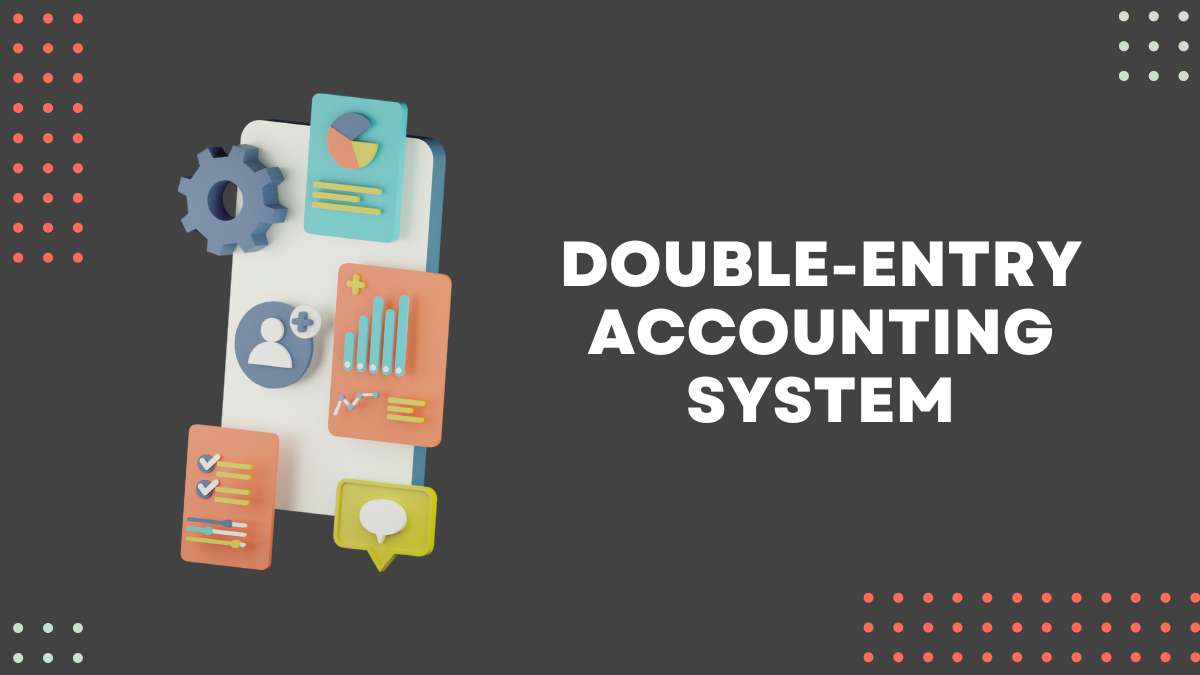Last updated on September 1st, 2025 at 05:15 pm
Maintaining correct financial records is imperative for every business, small or big. It helps maintain transparency in the system and comes in handy during audits. Among the many accounting systems available, one tried-and-tested method is the double-entry accounting system.
It has proven its reliability and efficiency over the years, with roots tracing back centuries. In this blog, let’s explore this accounting method and its ability to maintain accurate financial records.
What Is a Double-entry Accounting System?
As its name suggests, the double-entry accounting system records each financial transaction in two accounts – debit and credit. The principle behind this methodology is to maintain a balance in the books for every transaction. This process ensures that the debit side of the books always equates with the credit side of the books, which, in turn, creates a balanced ledger.
For example, if a company buys machinery, it will be listed as assets in the debit section, and its payment will be reflected in the credit section.
Importance of Double-entry Accounting System
The double-entry system has proven its mettle over the years, and here are the reasons why they are still trusted –
Guarantees accuracy
The structure of the double-entry accounting system automatically ensures accuracy. Since it aims to balance both sides of the book, there is an inherent check-and-balance system that automatically spots errors. For instance, if a transaction is recorded in the debit section but not in the credit section, it will not tally on the balance sheet. Hence, accountants need to review it and make corrections.
Prevent frauds
While there are many fraud detection technologies on the market, double-entry accounting is still quite important in this regard. Recording the transactions on two sides of the table makes it easy to spot any discrepancies. This particular feature comes in handy for companies where multiple people are handling financial transactions and keeping records.
Reflect the financial health of the company
The balance sheet also acts as a mirror for the company’s financial health. It shows how the company’s assets and liabilities are stacking up and provides a clear snapshot of its financial health. As a result, it helps the company owners, promoters, and other stakeholders make necessary decisions.
Basis of financial reporting and analysis
This double-entry accounting system also creates the base for financial reporting and analysis by reflecting the organisation’s financial health. Moreover, following this method is mandatory if your company follows the Generally Accepted Accounting Principles (GAAP) for creating financial reports. With the balance sheet in order, experts can easily decode the company’s financial condition and draw future plans.
Aids in long-term financial planning
Along with keeping accurate financial records, this system also aids financial planning. Its clear and concise records provide the needed data to plan for the future. Moreover, since this system keeps data from multiple years, experts can also find trends and patterns and predict future financial activities. The foresight provided by this system is also invaluable for making strategic decisions about future investments and growth.
Advantages of Double-entry Accounting System
Here are some leading benefits of a double-entry accounting system –
Bring accountability: The accuracy and transparency offered by this system also facilitate accountability. Any mistakes here will lead to a mismatch, and the person in charge must take responsibility for it.
Helps in tax preparation: One of the most unheeded benefits of double-entry accounting is that it helps prepare for tax payments. Since transactions remain neatly organised, deductions are easier to determine.
Better management of cash flow: Since this double-entry system properly records transactions like receivables and payables, it becomes easier to figure out the cash flow of the business.
Excellent flexibility: Another major advantage of this system is that it supports every business. So, whether you are running a small retail store or a large manufacturing unit, this system supports every structure. Also, depending on your need, you can expand this system, making it the most flexible system.
Single-entry Vs Double-entry Accounting System: A Comparative Overview
Let’s delve deeper to know the difference between double-entry accounting and single-entry system –
| Point of difference | Double-entry | Single-entry |
| Definition | A financial system where transactions are recorded on both sides of the book | A financial system where transactions are recorded only on one side of the book |
| Financial statements | Balance sheet is prepared | Balance sheet is not prepared |
| Accuracy | More accurate | Not as accurate as the double-entry system |
| Ledger entries | Here transactions are recorded in personal accounts, nominal accounts and real accounts | Here transactions only reflect on personal accounts and cash accounts |
| Scope of analysis | High, as it offers a comprehensive overview of the company finances | Low, as it offers limited data regarding company finances |
| Suitability | This is suitable for small and large businesses | This is mostly suitable for small businesses |
So, these are the major differences between single-entry and double-entry systems. If you want to learn more, then you can join financial accounting courses like the PGFAM course from Imarticus Learning.
Final Thoughts
The double-entry accounting system is the base of modern financial management. It records transactions more balancedly and offers accurate and transparent financial reports that help businesses of all sizes. Its importance extends beyond basic record-keeping, as it offers a comprehensive view of a company’s financial health, enabling better decision-making for the future.

